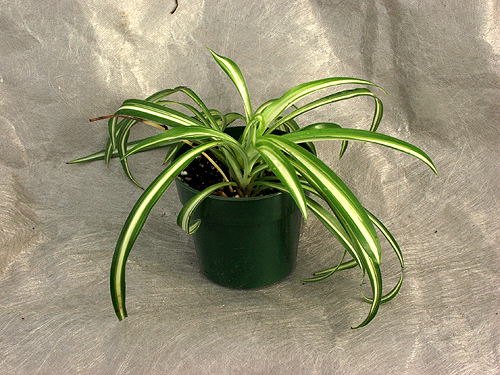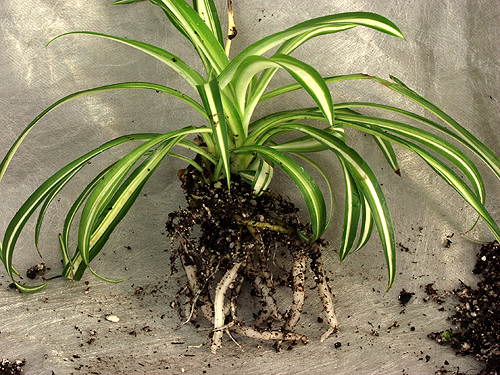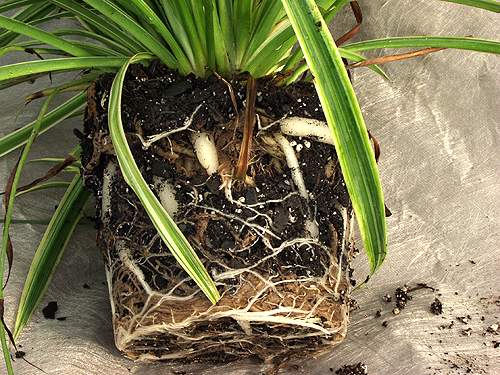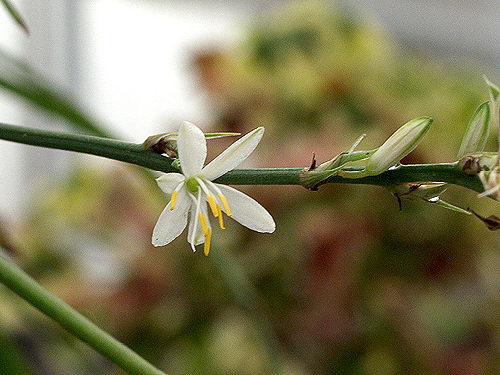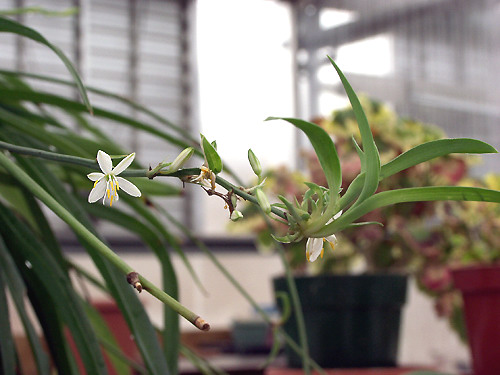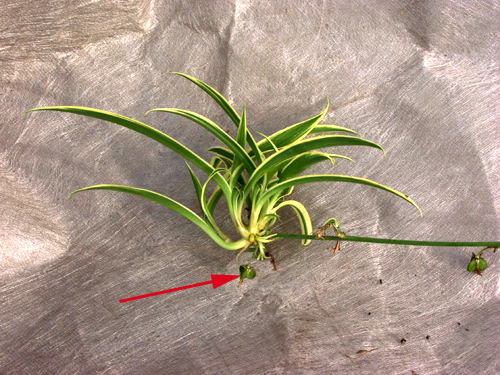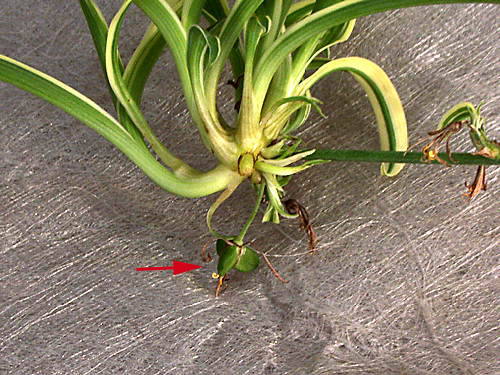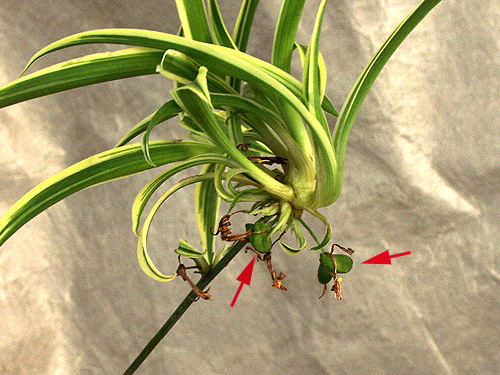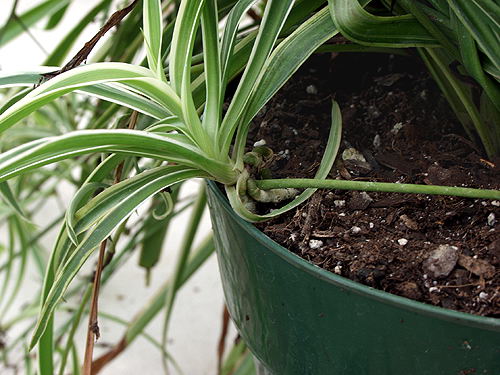| Description | Spider Plant (Chlorophytum comosum) is one of the more common plants and east to grow plants used in the indoors. |
|---|---|
| Pronunciation | (kloh-roh-FYE-tum) |
| Plant Type | All Plants, Indoor Foliage |
| Sunlight | native to full sun areas but grows best in some diredt light to bright light |
| Moisture | evenly moist to slightly dry, average house humidity |
| Soil & Site | average |
| Flowers | small white flowers are produced on the tips of the dangling branches (stolons) |
| Leaves | long strap-like, originating from a crown |
| Stems | stolons which hang over the side of the pot |
| Roots | tuberous, fleshy |
| Dimensions | can quickly fill out a 10-12" pot, spiders can hang down over 2 feet |
| Maintenance | This plant produces a mass of thick, white roots. If given a chance it will either crack or push out of the pot. When it gets root bound you can either transplant it into a larger pot or do some root pruning. Knock the plant out of the pot, cut an inch or so off of the bottom and a ring from the sides and repot. It will recover and fill the pot in again. Remember that this is major surgery and some TLC will help the plant recover. |
| Propagation | By far the easiest and most common way is to root the plantlets. Pick a mature one, that has a small mass of short, stubby roots. Remove it from the plant and press into some propagation media. It will quickly root. Older plants can be divided but this is not always an easy task. |
| Native Site | South Afira |
| Misc Facts | AKA: Variegated Spider Plant, airplane plant, St. Bernard's lily, spider ivy, ribbon plant |
| Author's Notes | The only real problem this plant has is its tendency for the tips of the leaves to turn brown. I have heard its from fluorine, chlorine or under watering???? I have not consider this as a problem but just a characteristic of the plant and I live with it. |
| Notes & Reference | #02-Exotic Plant Manual (Alfred Byrd Graf), #18-House Plant Encyclopedia (Nico Vermeulen), #158-Plantepedia (Maggie Stuckey) |

Cart
